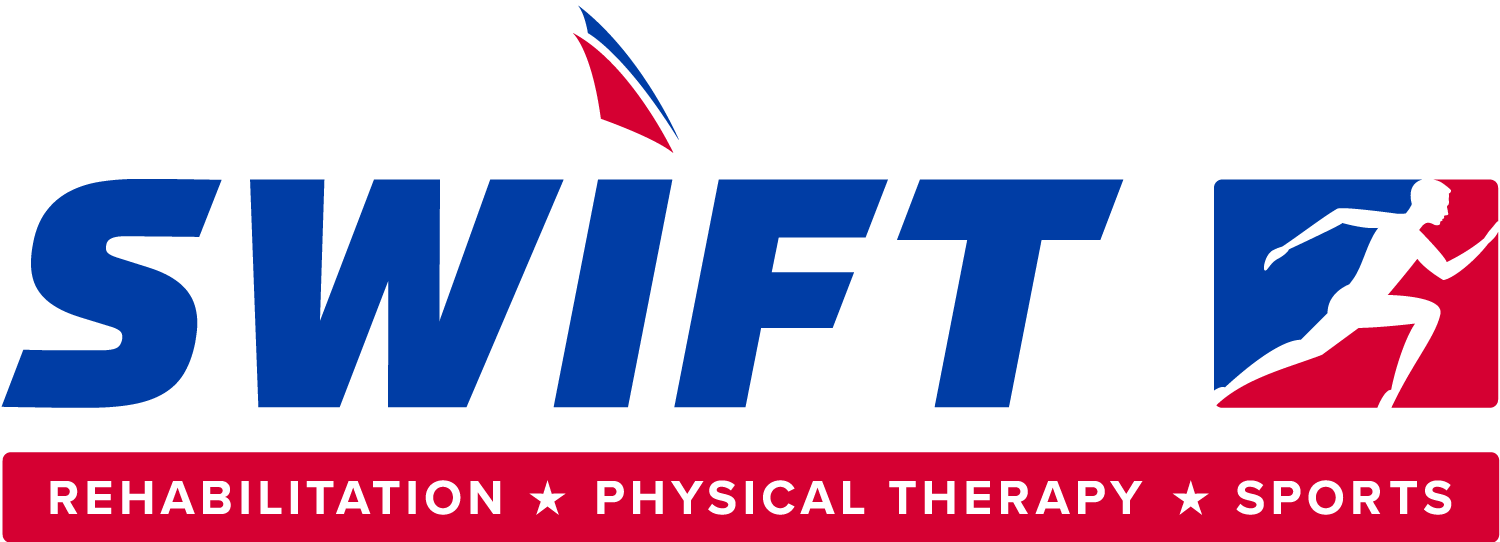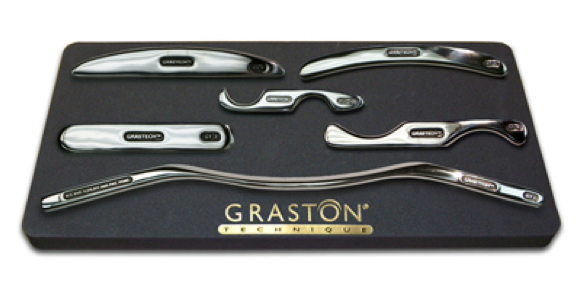Graston Technique
Graston technique (GT) is an evidence-based method of instrument-assisted soft tissue mobilizations (IASTM) that is combined with rehabilitation exercises to improve musculoskeletal function. GT incorporates the use of six specifically designed stainless steel instruments to aid the clinician in the detection and treatment of soft tissue dysfunction. GT is superior to other IASTM systems due to the following features:
- Instrument design
- Instrument material/weight
- Curvilinear treatment edges
- Treatment angles
- Required educational component
- Technique delivery
The GT instruments detect and amplify the feel of soft tissue restrictions to the hands, similar to how a stethoscope amplifies the sound of a heartbeat. Some benefits of GT for clinicians include:
- Increased diagnostic skills
- Increased mechanical advantage (using the instruments as levers)
- Decreased treatment time
- Decreased clinician fatigue
- Increased specificity of tissue treatment
The GT instruments are contoured edges designed to conform to different body surfaces and conformation. They are either concave, convex, rounded, or pointed depending on which instrument you are using and how you are using it. Some instruments have either a single bevel treatment edge or a double bevel.
While applying Graston to specific areas patients may get some bruising or pain. This is not the goal of Graston but sometimes occurs with greater pressure applied to the soft tissue or if patients tend to bruise easier than other people. If bruising does occur than GT shouldn’t be applied to that area until bruising has subsided.
GT Basic Treatment Strokes
- Sweep
- Fan
- Brush
- Strum
- J-stroke
- Swivel
- Scoop
- Framing
GT1 is used for evaluating and treating soft tissue restrictions over larger surface areas. It’s a single bevel, concave treatment edge, with two convex knobs. Can use sweeping, fanning, swiveling, and scooping strokes.
GT2 is used for evaluating and treating convex shaped soft tissue with curved treatment surface. It’s a one single, one double bevel edge, with two convex knobs. Can use sweeping, fanning, swiveling, and scooping strokes.
GT3 is used to for localizing and treating specific (smaller) soft tissue restrictions. It’s a single bevel, convex treatment curve. Can use brushing, J-stroke, or strumming strokes.
GT4 is used for evaluating and treating concave shaped soft tissue restrictions. It’s a single bevel, convex, with smaller edge at each end. Can use sweeping, and fanning strokes.
GT5 is used for evaluating and treating convex shaped tissue restrictions. It’s a single bevel, concave originally developed for intercostal region. Can use sweeping, fanning, swiveling, and scooping strokes.
GT6 is used for evaluating and treating carpal tunnel, digits and specific localized soft tissue restrictions. It’s one single and one double bevel convex edge, with a treatment tip and a knob/hook. Can use sweeping, scooping, brushing, J-stroke, or strumming strokes.


